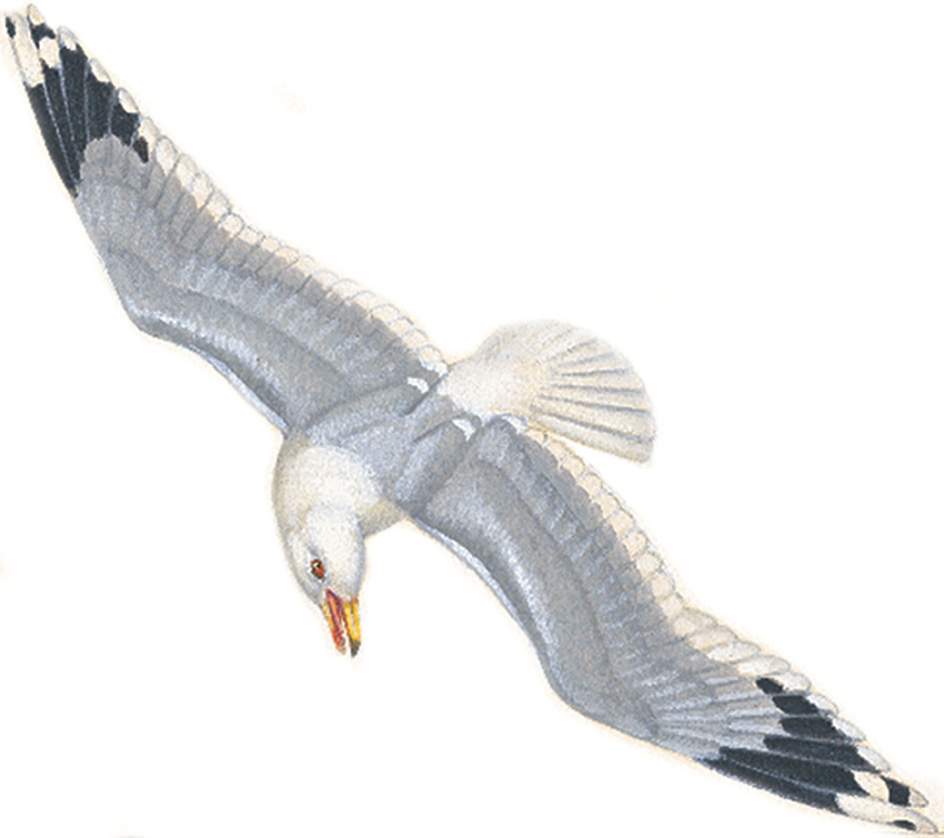California gull is a medium sized gull of western North America. It measures about 21 inches (53 centimeters) long and features a round head, a long bill, and long, narrow wings. Adults appear primarily gray and white in color. In 1848, a flock of California gulls ate a swarm of grasshoppers that threatened the crops of early Mormon settlers in Utah. As a result, the California gull later gained recognition as Utah’s state bird.

Young California gulls are speckled brown and white with a dark tail and beak. They acquire their adult coloration over four years. The coloring of the mature California gull resembles that of many other gulls, with a dark gray mantle (the feathers on the upper back), white head and body, and black wingtips. A black band and red spot mark its yellow beak near the tip. During the nonbreeding season, brown streaks mark its head and the back of its neck.
Loading the player...California gull
California gulls can be found far from the sea. They visit lakes, marshes, ocean beaches, rivers, farms, and even garbage dumps and parking lots in search of food. Their diet includes birds’ eggs and young, earthworms, fish, fruits and grains, garbage, insects, and rodents. California gulls may forage (search for food) on land or on the surface of the water.
During the breeding season, both the male and the female help build a nest and incubate the eggs. The nest, a shallow scrape in the ground lined with bones, feathers, and vegetation, usually contains two to three brown, olive, or gray eggs with dark speckles. California gulls nest in colonies (groups), and nests within a colony may lie close together. In winter, most California gulls migrate from the interior West to the Pacific Coast, sometimes flying as far south as Central America.
See also Utah (The Mormons).
